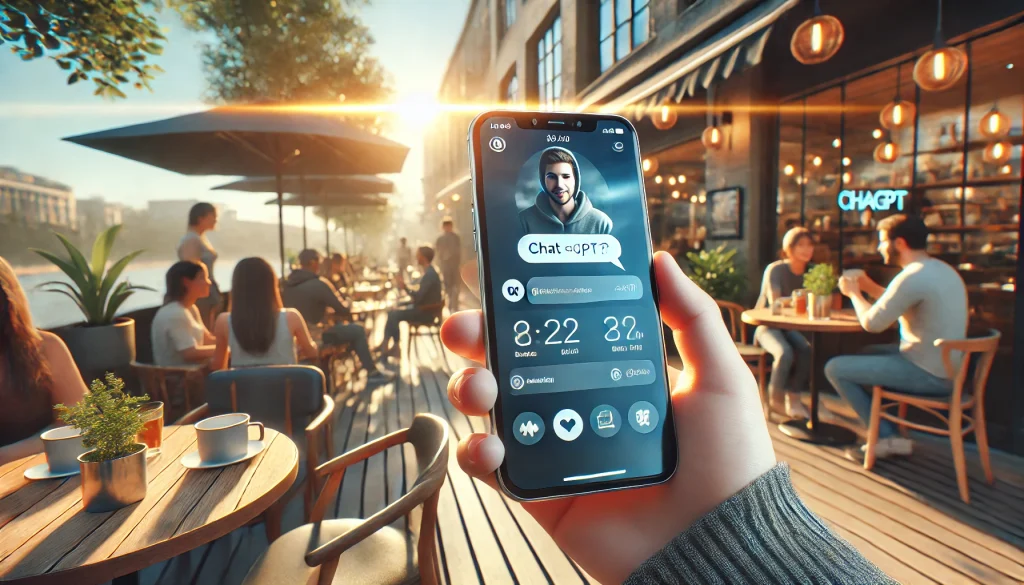We’ve all been there—you click on an article or watch a video, and within moments, you’re hit with an overload of information delivered in the most robotic, lecture-like fashion. It’s like sitting in a class you didn’t sign up for. You thought you were about to learn something cool, but instead, you feel like you’re being talked at rather than talked with. That’s the content equivalent of a snooze button.
But here’s the thing: content doesn’t have to be like this. In fact, the best kind of content feels like a conversation with a friend—informal, engaging, and yes, a bit playful. So how do you make your content feel more like a friendly chat and less like a dry, monotonous lecture? That’s what we’re about to break down.
Why Conversations Are Better Than Lectures
First, let’s answer the obvious question: why should you care about making your content conversational? After all, isn’t the goal to educate, inform, and maybe even convince people of something?
Sure, but here’s the kicker: people learn better when they feel engaged. When content feels like a conversation, it’s easier for your audience to relate, absorb information, and connect with your message. It’s the difference between being excited to share something with a friend versus reading out loud from a textbook.
And let’s be honest—no one really enjoys reading textbooks.
When your content feels conversational, you’re building a relationship with your audience. You’re not just throwing information at them; you’re creating a connection. And connections? That’s what turns casual readers into loyal followers.
The Magic of Tone: Write Like You Talk
One of the easiest ways to make your content feel more like a conversation is to write the way you speak. That’s right, you don’t need to sound like you just swallowed a thesaurus. Keep it natural and casual, just like you would when chatting with a friend.
Here are some tips:
- Use contractions: Say “you’re” instead of “you are,” and “it’s” instead of “it is.” It’s a small change, but it makes a huge difference in how natural your content feels.
- Keep it simple: Avoid jargon and overly complicated sentences. If you wouldn’t say something in real life, don’t write it.
- Ask questions: This is a key to making your content interactive. Asking questions engages readers, even if they’re rhetorical. It feels like you’re inviting them into the conversation.
For example, instead of saying, “Creating engaging content is essential for increasing user interaction and brand loyalty,” you might say, “Want to keep people coming back for more? Create content that actually engages them.”
See the difference? One sounds like a business meeting, and the other sounds like you’re offering advice over coffee.
Be a Storyteller, Not a Professor
Humans are wired for stories. We’ve been telling them around campfires for thousands of years, and guess what? We still love them just as much. Stories make your content relatable and memorable. Instead of bombarding your audience with a pile of facts, tell them a story they can connect with.
Let’s say you’re writing a blog post about productivity. You could start with:
Lecture version: “Using a to-do list can increase your productivity by helping you prioritize tasks.”
Conversational version: “You know those days when you feel like you’re busy all day but get nothing done? Yeah, that was me last Tuesday. But then I remembered my trusty to-do list…”
In the second version, you’ve introduced a story that readers can relate to, which instantly pulls them in. You’re not just spouting facts—you’re sharing an experience.
Keep It Light and Fun
Just because you’re sharing important information doesn’t mean you need to be serious all the time. In fact, a little humor can go a long way in making your content feel approachable and human. Throw in a joke, a witty observation, or even a light-hearted analogy to keep things from getting too dry.
Of course, you don’t need to turn every blog post into a stand-up routine, but a sprinkle of humor can make even the most technical topics more engaging.
For instance, instead of saying, “It’s crucial to monitor your analytics to understand your audience’s behavior,” you could say, “Think of your analytics like your favorite detective show—except instead of solving crimes, you’re figuring out why your latest post flopped.”
See how that makes it a little more fun?
Break Up the Text
When it comes to creating conversational content, how you format your writing is just as important as what you say. Long, unbroken blocks of text scream “lecture.” They’re hard on the eyes and make readers feel like they’ve got a lot of heavy lifting to do.
To make your content feel more like a conversation, use shorter paragraphs, bullet points, and subheadings. This helps guide readers through your content more smoothly and keeps things feeling light and digestible.
Here’s an example of what we mean:
Lecturing block of text:
“When creating content, it is important to understand your audience’s preferences and cater to their needs. This can be done by conducting thorough market research, analyzing previous content performance, and staying up-to-date with industry trends. By doing so, you can create content that is both relevant and engaging, which will increase user interaction and lead to greater brand loyalty.”
Conversational, broken up version:
“Let’s talk about why knowing your audience is key.
If you don’t know what they like, how can you create content they’ll actually engage with? Here’s the secret: do a little homework. Look at your previous content and see what worked. Check out what’s trending in your industry. And most importantly, listen to your audience!
Do this, and you’ll be on your way to creating content that keeps them coming back for more.”
Notice how the second version is easier to follow? That’s the power of white space and clear formatting!
Invite Responses and Feedback
Another way to make your content feel like a conversation is to actively invite your readers to engage. Ask for their thoughts, opinions, or personal experiences. This not only makes the content feel more interactive but also encourages comments, shares, and discussions.
For example, you could end your post with something like:
“What about you? How do you keep your content conversational? Let me know in the comments—I’d love to hear your tips!”
This gives your readers a chance to feel like they’re a part of the conversation, rather than just passive recipients of information.
Use Examples and Analogies
Analogies and examples are a great way to make complex topics feel more relatable. When you compare a tricky concept to something familiar, you’re helping your audience understand it better—just like you would in a real conversation.
Let’s say you’re explaining SEO. You could say:
“SEO is like a game of hide-and-seek, but with Google as the seeker. The better you hide (optimize your content), the more likely Google is to find you and show you to others.”
Boom. SEO doesn’t seem so intimidating anymore, does it?
Wrap It Up With a Recap
Conversations have a natural flow, and part of that flow is circling back to what’s important. When you’re wrapping up your content, don’t just drop a conclusion and leave. Summarize your key points like you’re reminding a friend of what you just talked about.
“Alright, so we’ve covered a lot today. The big takeaway? If you want to keep your readers engaged, write like you’re talking to a friend. Keep it light, tell stories, ask questions, and throw in a little humor. Trust me, it works.”
By doing this, you’re reinforcing the most important parts of your message without sounding like a professor closing out a lecture.
Final Thoughts: Let’s Chat, Not Preach
At the end of the day, content that feels like a conversation is more enjoyable to read, easier to connect with, and more likely to keep your audience coming back. So the next time you’re creating something, think of it like a chat with a friend—keep it natural, keep it fun, and most importantly, keep it real.
Ready to make your content more conversational? Let’s hear your thoughts!







